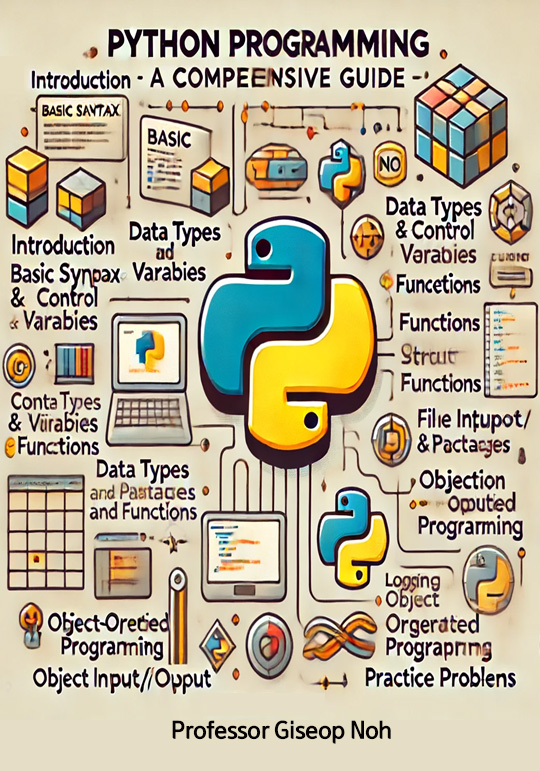연습 문제
12.3. 연습 문제¶
텍스트 파일
example.txt를 생성하고, 다음 내용을 파일에 작성하는 프로그램을 작성하세요:Hello, World! This is a test file. Python is great!
with open('example.txt', 'w') as file: file.write("Hello, World!\n") file.write("This is a test file.\n") file.write("Python is great!\n")
위에서 작성한
example.txt파일을 읽고, 각 줄을 출력하는 프로그램을 작성하세요.with open('example.txt', 'r') as file: for line in file: print(line.strip())
사용자가 입력한 문자열을
user_input.txt파일에 저장하는 프로그램을 작성하세요.user_input = input("Enter a string to save to file: ") with open('user_input.txt', 'w') as file: file.write(user_input)
numbers.txt파일에 1부터 10까지의 숫자를 한 줄에 하나씩 저장하는 프로그램을 작성하세요.with open('numbers.txt', 'w') as file: for i in range(1, 11): file.write(f"{i}\n")
위에서 작성한
numbers.txt파일을 읽고, 각 숫자의 제곱을 출력하는 프로그램을 작성하세요.with open('numbers.txt', 'r') as file: for line in file: number = int(line.strip()) print(f"{number} squared is {number**2}")
텍스트 파일
append_example.txt를 생성하고, 처음에는 “Initial content.”를 작성하고, 이후에 “Appended content.”를 추가하는 프로그램을 작성하세요.# 처음 내용 작성 with open('append_example.txt', 'w') as file: file.write("Initial content.\n") # 내용 추가 with open('append_example.txt', 'a') as file: file.write("Appended content.\n")
바이너리 파일
binary_example.bin을 생성하고, 임의의 바이너리 데이터를 작성한 후, 다시 읽어 출력하는 프로그램을 작성하세요.# 바이너리 데이터 작성 with open('binary_example.bin', 'wb') as file: file.write(b'\x00\x01\x02\x03\x04') # 바이너리 데이터 읽기 with open('binary_example.bin', 'rb') as file: binary_content = file.read() print(binary_content)
파이썬 객체(딕셔너리)를
pickle모듈을 사용하여 파일에 저장하고, 다시 읽어오는 프로그램을 작성하세요.import pickle data = {'name': 'Alice', 'age': 30, 'city': 'New York'} # 객체를 바이너리 파일에 저장 with open('data.pkl', 'wb') as file: pickle.dump(data, file) # 바이너리 파일에서 객체 읽기 with open('data.pkl', 'rb') as file: loaded_data = pickle.load(file) print(loaded_data)
사용자가 입력한 여러 줄의 텍스트를 파일에 저장하고, 다시 읽어 출력하는 프로그램을 작성하세요.
user_inputs = [] print("Enter multiple lines of text (type 'done' to finish):") while True: line = input() if line.lower() == 'done': break user_inputs.append(line + '\n') with open('multiline_input.txt', 'w') as file: file.writelines(user_inputs) with open('multiline_input.txt', 'r') as file: content = file.read() print(content)
기존의 텍스트 파일을 읽고, 특정 단어를 다른 단어로 바꿔서 저장하는 프로그램을 작성하세요.
with open('example.txt', 'r+') as file: content = file.read() updated_content = content.replace('test', 'example') file.seek(0) file.write(updated_content) file.truncate() with open('example.txt', 'r') as file: content = file.read() print(content)
